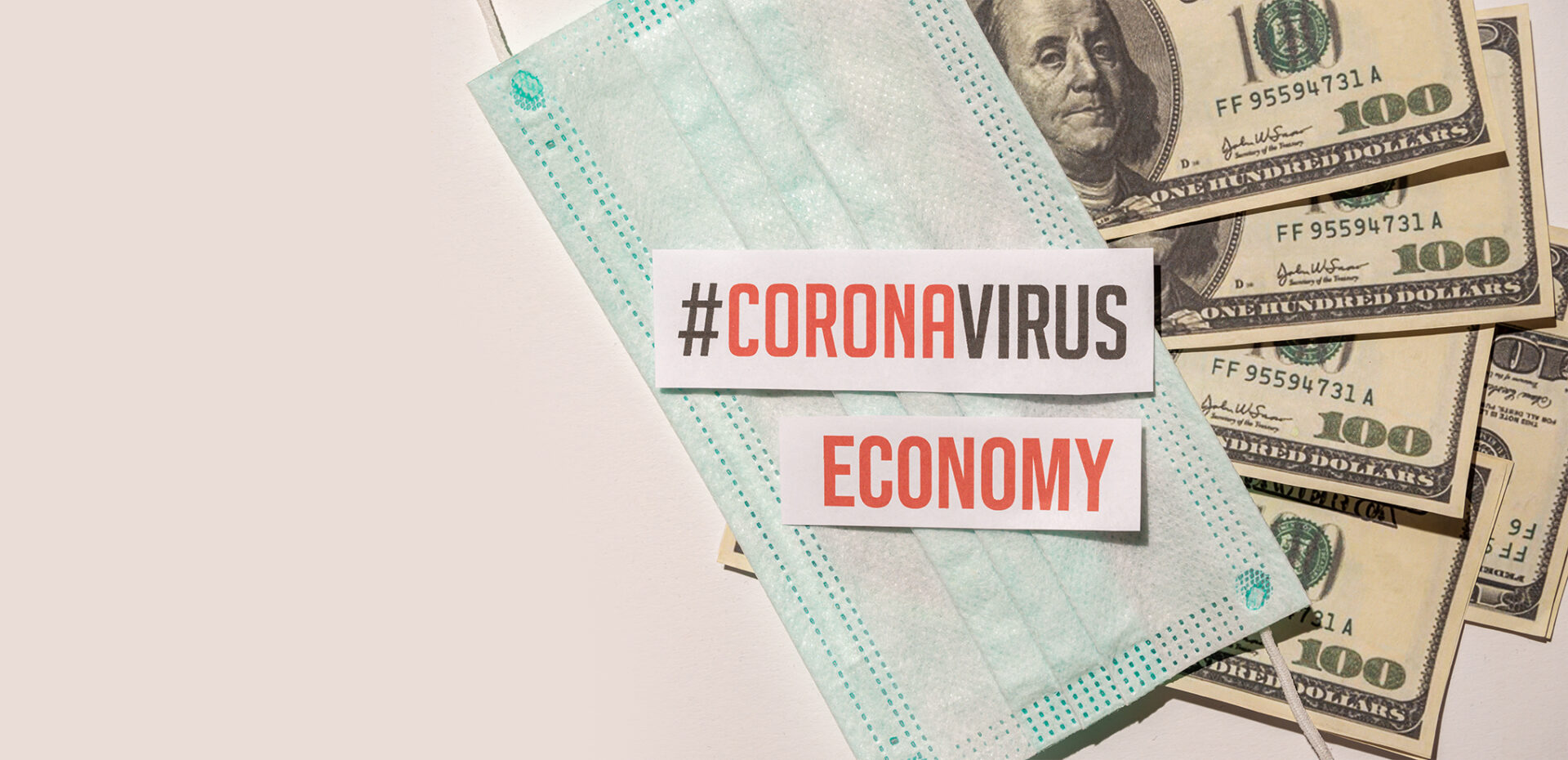- The COVID-19 virus has impacted the medical community’s financial bottom line
- A new “interim” emergency Coronavirus Bill is in discussion with at least $500 billion in relief support for hospitals
- The CARES Act is estimated to make $117 billion available in new funding for urban and rural hospitals and healthcare systems
Physicians and advanced practice clinicians across the nation are in full crisis footing. The surge of positive COVID-19 cases has the hospital system on edge in a wartime triage dynamic.
With untold expenses to convert beds, fill equipment gaps, fulfill staffing needs, create field hospitals and more — the cost of caring for critically ill COVID-19 patients is taking a human toll on providers and healthcare systems nationwide. While COVID-19 rages on, with it comes shrinking revenues and rising costs. Medical community challenges cascade from there.
At Hayes Locums, we have been reaching out to our clients and providers in support. Our conversations are tough. We talk about what’s happening in terms of COVID-19 caseloads, elective surgeries put on hold, financial difficulties and more. Despite it all, one fact has never stopped resonating: Our current national health crisis continues to demonstrate how the medical community takes on the business of saving lives. No matter the risks. No matter what. In 2020, we understand this: COVID-19 is what catastrophe medicine looks like.
Stimulus Relief
The economic impact of COVID-19 on health systems is rampant. The need to prevent the medical community from cratering necessitates a far-reaching relief package. The Coronavirus Aid, Relief, and Economic Security Act, (CARES/ H.R. 748) was passed on March 25th. It established or expanded several loan programs intended to provide liquidity to businesses, including physician practices, as reported by the American Medical Association (AMA). The CARES Act contains provisions to help mitigate the economic damage inflicted on American doctors, hospitals and other healthcare organizations to assist in providing optimal patient care.
While the American Hospital Association (AHA) has expressed support of the CARES Act, the AHA advises that “more steps will need to be taken in subsequent legislation to make sure providers on the front lines remain prioritized for future federal assistance as the COVID-19 pandemic spreads.”
As of April 8th, a push for an “interim” emergency Coronavirus bill to include at least $500 billion in relief support for hospitals was also on the table. A congressional proposal dubbed the “Heroes Fund” includes as much as $25,000 in hazard pay that would be afforded over a period of time to individuals deemed essential, including healthcare employees, reports Newsweek. Retroactive benefits would be applied for those already working on the frontlines.
Big picture, COVID-19 is affecting the economy in three main ways, according to Deloitte Insights:
- By directly affecting production
- By creating supply chain and market disruption
- And by its financial impact on firms and financial markets
The force of COVID-19 on our nation’s medical community is writ large — from the embattled providers and other healthcare workers to the operating system itself. Hospital overflow has even led to field hospitals being erected in once bustling convention centers, sports stadiums and city parks. These circumstances have raised legitimate concerns that require strategies to help bolster hospitals and healthcare systems. A widespread alarm is ringing throughout the medical community.
“The economic impact of COVID-19 on health systems is rampant.”
The CARES Act and other stimulus that is in the works will continue to be especially vital as the virus spreads. It will hopefully act as a strategic and much-needed lifeline. Our Hayes Locums philosophy is that fundamentals are a necessary component for building a strong future. Perhaps that phrase carries more weight now, more than ever. The details of the nearly $2 trillion COVID-19 stimulus package passed last month includes $100 billion to reimburse eligible healthcare providers for COVID-19 related expenses and lost revenues not otherwise reimbursed that are directly attributable to COVID-19. Other healthcare provisions include: Emergency funding for hospitals and health systems, a Medicaid Disproportionate Share Hospital (DSH) cut delay, temporary elimination of the Medicare sequester, and a Medicare diagnosis-related group (DRG) add-on payment. The CARES Act is estimated to make available $117 billion in new funding for urban and rural hospitals and health systems, reports the AHA.
Stimulus and Healthcare Components
The CARES Act includes stimulus and healthcare components and resources for small and medium practices, large practices, public health and states:
The Small Business Administration (SBA) offers details about the Paycheck Protection Program, which supplements the CARES ACT.
Click here for the Paycheck Protection Program.
Click here for general COVID-19 guidance for businesses from the SBA.
Assistance for mid-sized businesses of 500-10,000 employees will be available through the financing of direct loans with interest rates no higher than 2 percent. Details of this relief action and other information is still coming in.
Click here for the Department of Treasury, which is responsible for loan program administration, loan guarantees and other investments.
Funding resources for public health providers for healthcare-related expenses or lost revenues due to COVID-19 will be available through grants and other methods. This appropriation is reported as “hospital” funding, reports the American College of Cardiology. “It is universal, and practices of any size may consider pursuing compensation for losses not accounted for elsewhere.”
Click here for information through Health and Human Services (Title VIII of the bill for a Public Health and Social Services Emergency Fund).
States are covered under Section 5001 of the Act, which creates a Coronavirus Relief Fund that directs money to state, tribal and local governments to support expenditures necessary to respond to the pandemic. Dissemination details could include monies/programs that benefit providers through reimbursement programs.

Elective Procedures
The COVID-19 target has no boundaries. It’s not just the large, urban hospital systems that are struggling during this pandemic. For hundreds of smaller, rural hospitals without financial cushions, the impact of the virus is likely to make an already difficult financial situation potentially worse. And now, April reporting indicates that COVID-19 has officially reached more than two-thirds of the country’s rural counties.
The elephant in the room is the timeline. When the country will open again is still looming. Just last month, procedures that doctors deemed elective were placed on hold at the request of the U.S. Surgeon General based on guidance by the Centers for Disease Control and Prevention. The financial and human burden of stopping elective surgeries because of the virus outbreak has vast repercussions. Elective procedures are the lifeblood for thousands of primary care groups, specialty clinics and surgical centers, and many of the doctors who own them are now struggling to make payroll, CNBC reports. While hospitals and providers across our nation are at the front lines of saving the lives of COVID-19 patients, suspension of all elective medical procedures have hospitals feeling the financial effects of lost revenue and in many cases, furloughed personnel.
“The COVID-19 target has no boundaries.”
A March ABC News report cited, “Having to postpone prostate surgeries, colonoscopies, skin cancer removals and other procedures could mean life or death for patients, but otherwise, it could also create stress on hospitals bracing for COVID-19 cases.” The elective surgery shut-down guidance was based on several variables, including eliminating risk for non-COVID-19 patients, while also freeing up clinicians, beds and equipment.
Elective procedures are but one of the COVID-19 casualties causing strain. Our conversations with clients and providers keep us coming back to find answers that make sense at this unparalleled time: The medical community must stay nimble to get past this.
Out of Every Crisis …
Out of every crisis, new or alternative ways of doing things gain traction. Burgeoning telehealth medicine is one example of how social distancing access for providers, hospitals and patients can work. The AMA updated its Digital Health Implementation Playbook Series to include a new physician guide for implementing real-time audio and visual visits between a clinician and a patient. The AMA says that in response to calls for flexibility and broadening access to telemedicine services during this health emergency, certain federal privacy regulations have been relaxed and payment policies expanded as a result of actions taken by the department of Health and Human Services, the Office for Civil Rights and the Centers for Medicare & Medicaid Services.
Click here for other COVID-19 Resources & Updates.





